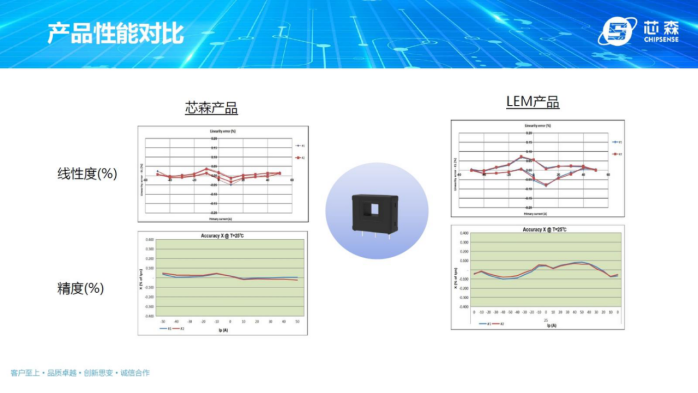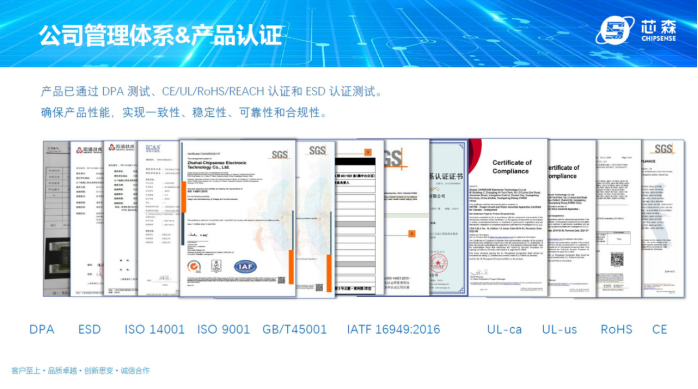
On May 12, China and the United States announced a significant reduction in tariffs. Among them, the United States suspended the 24% tariff on Chinese goods (retaining 10%), and China simultaneously canceled 91% of the counter-tariffs against the United States. This policy is also undoubtedly a big positive for export-dependent manufacturing enterprises. As the core device of new energy vehicles, smart factories, energy storage and other fields, the current sensor industry chain will usher in structural opportunities. This article focuses on the domestic current sensor leader CHIPSENSE, and analyzes how it seizes the trend by virtue of product strength and strategic layout. It is for reference only and is not used as investment advice.

The industry dividend of tariff reduction: cost reduction + market expansion
Export costs plummet, freeing up profit margins
Previously, the US imposed a tax rate of 50% -70% on auto parts and other goods, but this time it has been reduced to 10%, directly reducing the export cost of enterprises. Take CHIPSENSE as an example, its current sensors are widely used in battery management systems (BMS), charging piles and other scenarios of new energy vehicles. The US market share has increased year by year, and the competitiveness of current sensor products has been significantly enhanced after the tariff reduction.
The new energy vehicle industry chain benefits
China's new energy vehicle parts exports rose by 4.5% year-on-year in Q1 2025, with demand for core components such as motors and electronic controls surging. CHIPSENSE fluxgate current sensor (0.5% accuracy) acts as the "sensory nerve" of the BMS system, which can accurately monitor the bus current of the battery pack. Future demand will grow synchronously with the export of new energy vehicles.
Domestic substitution accelerates
The United States' tax increase on mature process chips has forced the domestic supply chain to shift to localization. CHIPSENSE products cover the 5mA-5000A current, 10V-6400V voltage range, and the performance parameters current sensors are comparable to international brands, but the cost is reduced by 30% -50%, making CHIPSENSE become the first choice for domestic substitution.

The core advantages of CHIPSENSE current sensor: technology + certification + production capacity.
The Vehicle certification builds barriers
CHIPSENSE has passed the IATF 16949:2016 automotive quality management system certification and completed the ISO 9001 (quality management) and ISO 14001 (environmental management) three system audits. This certification is a "pass" to enter the global automotive supply chain, ensuring the stable supply of its products in Tesla, BYD and other automakers.
The Technology Corresponds to International Leaders
The Hall current sensor (CM2A series) and AN1V-PB20 series current sensor against other brands leaders, and the response time (0.5μs), voltage resistance (transient 12.5kV) and other parameters have reached the international leading level. CHIPSENSE current sensors have been applied to high-precision scenarios such as photovoltaic inverters, energy storage systems, and industrial robots. To a certain extent,CHIPSENSE CM2A series current sensor are more stable.
The Capacity and supply chain assurance
CHIPSENSE has intelligent production bases in Tianjin and Zhuhai, with 16 production lines (fully automatic and semi-automatic) and 4 welding robot production lines. It has the country's leading sensor fully automatic production line, and CHIPSENSE production beat can reach 15 seconds. The overall annual production capacity can reach 6 million pieces. The "three-system certification" launched by CHIPSENSE in 2024 further optimized the production process, and the yield rate increased to 99.3%.

Market opportunities and strategic layout
Seizing the smart factory and smart supply chain
CHIPSENSE miniature Hall current sensors have been applied to the automation control and data collection system of smart factories, helping to realize digital logistics and supply chain management. With the advancement of "Made in China 2025", the demand in the field of industrial automation will continue to be released.
Expanding overseas markets
Supply chain cooperation and substitution: In cooperation with customers (such as automakers and industrial equipment manufacturers) located in Mexico, through localized procurement, we can indirectly benefit from tax-free policies. CHIPSENSE can use the US-Mexico-Canada Agreement (USMCA) to achieve "zero tariff" exports and directly connect with North American automakers. Its sales to the US will increase by 46% year-on-year in 2024, and CHIPSENSE will expect to further expand its share in the future.
Policy risk hedging
CHIPSENSE relying on Tianjin and Zhuhai bases to meet export demand, offset the impact of tariffs through technological innovation and cost optimization.
Future Prospects: The Golden Age of Domestic Sensors
Policy-driven localization
China plans to achieve a semiconductor autonomy rate of 70% by 2035, and current sensors as key components will benefit from subsidies and procurement preferences. CHIPSENSE also has established a research institute with North China Electric Power University, with R&D investment accounting for 15%. The technology moat continues to deepen.
Increased industry concentration
The current domestic sensor market is less than 20% CR5. With leading companies integrating the market through certification, production capacity, and cost advantages, CHIPSENSE is expected to become a leader in the segmentation field.
Conclusion.
The tariff adjustment between China and US has released a signal of industrial chain restructuring. CHIPSENSE has stood in the trend of domestic substitution with its technical strength and strategic card position. Driven by policy dividends and market demand, CHIPSENSE is expected to replicate the growth path of "High Precision" and become an important pole of the global current sensor market.
(Disclaimer: This article is based on publicly available information and is intended for information sharing. It does not constitute any investment or application advice. Please refer to the official documentation or consult a professional for specific product selection.)
CHIPSENSE is a national high-tech enterprise that focuses on the research and development, production, and application of high-end current and voltage sensors, as well as forward research on sensor chips and cutting-edge sensor technologies. CHIPSENSE is committed to providing customers with independently developed sensors, as well as diversified customized products and solutions.
“CHIPSENSE, sensing a better world!
www.chipsense.net
4F, Building C, ZHENGLING.Hi-TECH PARK(Core Space) , No. 2 Cuizhu 2nd Street, Xiangzhou District, Zhuhai, Guangdong Province, China
+86-756-8600806